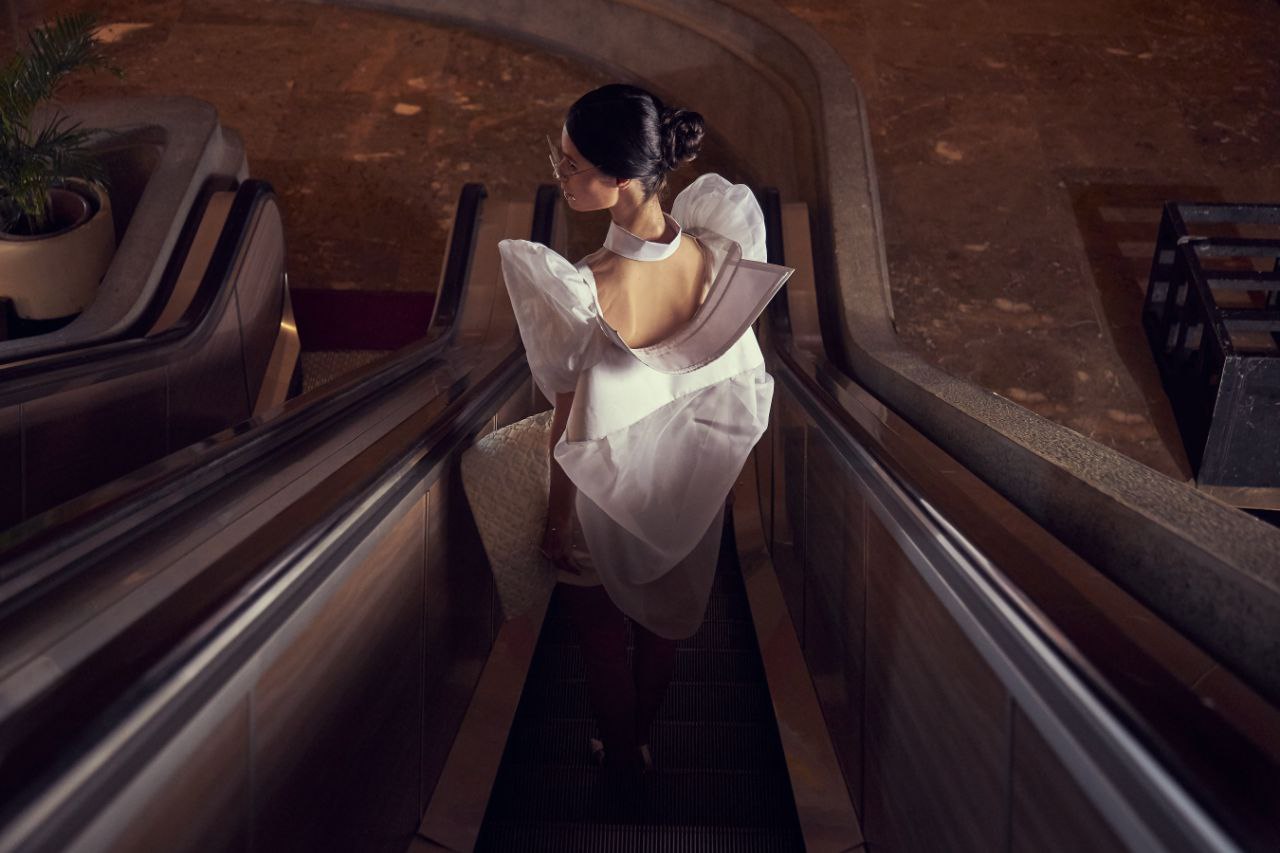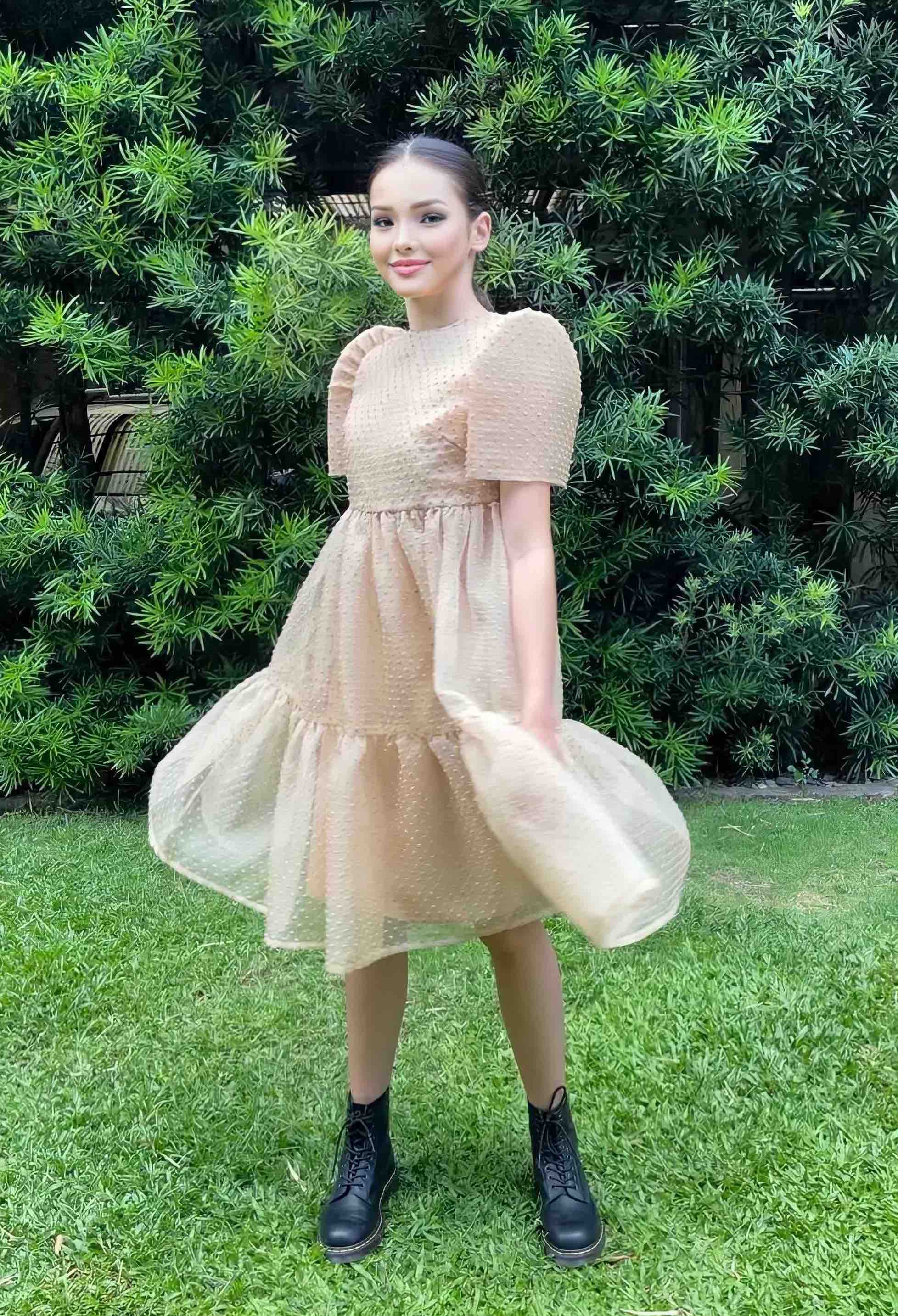6 Filipino designers modernize the ‘terno’
There’s a reason why people call a particular attire in their wardrobe the “national dress.” Apart from being a symbol of their country, its history and traditions, it also reflects what’s beautiful and refined in their culture.
As the national dress, it’s also meant to be worn with pride on a fairly regular basis, and not just during special occasions like weddings, baptisms of one’s children and, well, funerals.

Thus, when one travels, say, to Japan, Korea, India, or even Vietnam, one shouldn’t be surprised to encounter women in these countries wearing the kimono, hanbok, sari and ao dai in everyday venues from train stations to offices, markets to places of worship, schools to malls, as if it’s the most natural and casual thing to do.
While their Filipino sisters, in their baro’t saya, did the same thing before and during the turn of the last century, hardly anyone in the Philippines these days wears it except during cultural events and performances.


Although modern-day Filipino women have taken to wearing its updated iteration, which is the terno, during certain special events, nowhere is it worn with the same frequency and ubiquity as women in other countries do with their respective national dresses.
But thanks to the efforts of the country’s designers, beginning with the late National Artist for Fashion Ramon Valera, who’s credited by many for modernizing the baro’t saya by removing the tapis and panuelo, and fusing it into one garment aptly called the terno, a growing number of Filipino women have grown accustomed to wearing the national dress.

The terno’s evolution though is far from over, as some of the country’s current designers continue to put their stamp on the iconic Filipino attire.
What are the common challenges they encounter when designing and executing the terno? How far are they willing to go in giving it a fresh take? When does a refresh of the terno cross the line, unwittingly turning the effort into an occasion of derision and disrespect for one of the country’s most cherished symbols?

“For me, the main challenge is the availability of the cañamazo, and the limited colors such as black, white and off-white to choose from,” says Jojie Lloren, referring to the stiff canvas designers use as a foundation to make the terno’s iconic butterfly sleeves retain their upright form. “When doing see-through sleeves, for instance, I’m lucky if the cañamaso doesn’t affect the fabric’s color.”
Ivarluski Aseron agrees. “The terno’s butterfly sleeves,” he says, “are always made with painstaking care.” Fellow seasoned designer JC Buendia is also focused on the terno’s butterfly sleeves, albeit with a different perspective.

“It’s always a challenge to dress up women with narrow, sloping shoulders in a terno,” says JC. The terno’s sleeves, he adds, generally sit well on women with fairly straight, broad shoulders. Although the designer is no fan of Imelda Marcos, the former first lady, during her heyday, could easily pull off the look designed by the likes of Christian Espiritu and the late Joe Salazar because of her height, commanding presence and broad shoulders.
Soon after the Marcoses were booted from power, then President Corazon Aquino, perhaps in a conscious attempt not to be compared with anything her predecessors stood for, generally stayed away from the terno, choosing to wear instead a stylized kimona with abbreviated pagoda sleeves by Auggie Cordero.

Younger designers like Michael Leyva, Jaggy Glarino and Jo Rubio are also confronted with challenges unique to them when it comes to making the terno.
“I always want my designs to represent a Filipina who’s beautiful and a tad conservative,” says Michael. One of his challenges is staying as traditional as possible to the terno while incorporating it with modern touches.

Jo, a stickler for the “classics,” had a similar problem before. So much so that he had to “educate” certain clients first on what the terno really is and the need for him to, among other things, stick to its sleeves’ proper form and size.
“For me, tampering too much with the size of the terno’s sleeves just to make it look more modern defies the essence and traditional look of the terno,” he says. As a “romanticist,” Jo also considers such details as sculpted roses and “structured draping” on his ternos as his signature.

Although Jaggy has made a name for himself with his bold, sometimes avant-garde designs that require loads of imagination and courage to pull off, he couldn’t help but feel scared during his early years when clients would tap him to do their ternos.
“It takes skill and a good technical knowledge for one to construct it properly,” he shares. “It took a while for me to be really comfortable making one.”
Since there’s so much history and heritage riding on the national dress, adds Jaggy, designers should go to great lengths to “complement and not trample on the garment’s integrity.”


“My take on the terno is anchored on my intuitive approach as a designer and the sculptural and artisanal quality of my clothes,” Jaggy shares. Apart from giving minor tweaks on their texture, proportion and construction, he leaves the terno sleeves pretty much alone. Rather, he goes all out on reworking the bodice.
Because of the wealth of inspirations and techniques available to him, Ivarluski thinks that there’s no need for him to “reinvent” a classic. “Reinvention only becomes necessary when what you’re working with offers you very limited options.” Ivarluski, who resorted to inverted butterfly sleeves and trademark banig treatment for his terno collection at the 2020 TernoCon, reasons.

For his part, Jojie is open to using “non-traditional” materials and, unlike Jo, tweaking the shape and dimensions of the terno sleeves. Currently, for instance, he’s doing off-the-shoulder ternos with their sleeves still managing to remain upright.
“As far as design goes, any twist or reinvention is all right as long as it’s done with respect, the terno being a symbol of the country’s culture and heritage,” says Jojie. “Like I will never do terno swimsuits or terno tops paired with shorts!”
When he joined the 2018 TernoCon, JC had no problem mixing traditional fabrics like piña and inabel with a more commercially available fabric like gazar in his attempt to demystify the terno and make it part of women’s everyday wear.

“Right now, I’m using a lot of poly-organdie for my ready-to-wear ternos,” says JC. He even gave his off-the-rack pieces a catchy hashtag—#PrêtÀTerno. The fairly new fabric, he continues, reminds him of the transparent piña, the material of choice in the early 20th century among wearers of Filipiniana outfits.
“It’s washable and stays crisp,” says JC, referring to poly-organdie. “For the sleeves, I use crinoline mesh because it bounces back into shape.”

In his attempt to veer away from traditional ternos made of fabrics in solid colors, Michael has also attempted to use various indigenous materials from all over the country. “Over the years, I’ve created multi-colored ternos, fully beaded ones as well as terno tops paired either with balloon skirts or pants. I even did a number of short terno dresses,” he says.
Like many of the other designers featured in this story, Michael sees nothing wrong at attempts made to reinvent the terno as long as “we remain consistent with the Filipina’s identity as a classy yet still fairly conservative woman,” he adds.
But Jaggy swears by the oft-repeated saying whenever he sits down and starts working on the terno. And it never fails, he declares, in tempering him. “If it ain’t broke, don’t fix it!”

Jo, who also sees himself as an advocate of heritage, has taken it upon himself to champion local artisans by incorporating his ternos with native materials that not only pays homage to the country’s culture, but also provides artisans much-needed jobs.
These designers don’t agree on everything when it comes to the terno, but one thing that binds them together, which Jo articulates when asked where he draws the line, is the need to keep its signature sleeves integral to the national dress.
